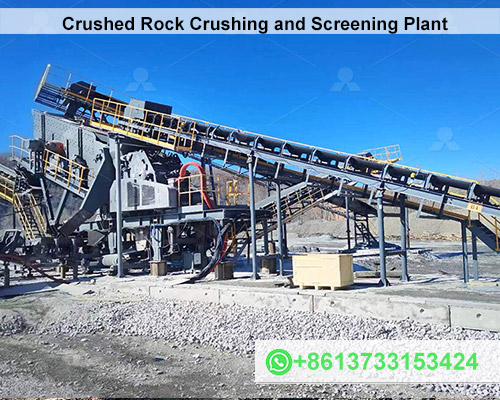Crushed Rock Crushing and Screening Plant
Introduction to Crushed Rock Crushing and Screening Plants
Crushed rock is a cornerstone material for construction, road building, and infrastructure projects. A modern crushed rock crushing and screening plant combines advanced machinery to process raw stones into precise sizes, ensuring high-quality aggregates. As a global leader in crushing solutions, Liming Heavy Industry designs and manufactures robust, efficient plants tailored for productivity and sustainability.
This guide explores the components, benefits, and innovations behind Liming’s crushing and screening systems, empowering businesses to maximize output and minimize costs.

Key Components of a Liming Crushing and Screening Plant
- Primary Crusher
- Liming Jaw Crusher (e.g., PE Series): Ideal for breaking large rocks (up to 1,500 mm) into 150–300 mm chunks.
- Benefits: High reduction ratio, low maintenance.
- Secondary Crusher
- Liming Cone Crusher (e.g., HPT Series): Refines material to 20–50 mm for uniform particle shapes.
- Advantages: Hydraulic adjustment for precise output control.
- Tertiary/Impact Crusher
- Liming Vertical Shaft Impactors (VSI) (e.g., VSI6X Series): Produces cubical aggregates (5–20 mm) for premium concrete and asphalt.
- Screening Equipment
- Liming Vibrating Screens (e.g., YKN Series): Separates crushed rock into precise grades (e.g., 0–5 mm, 5–20 mm).
- Conveyor Systems
- Liming Belt Conveyors: Automated material transfer between stages, reducing manual handling.
Benefits of Choosing Liming Heavy Industry’s Plants
- High Efficiency
- Liming’s plants process 200–800 tons/hour, depending on configuration.
- Smart automation adjusts settings in real time to match material hardness.
- Cost Savings
- Energy-efficient motors cut power consumption by 20–30% vs. traditional systems.
- Modular designs reduce installation time and costs.
- Durability
- Wear-resistant components (e.g., manganese steel jaws, reinforced screens) extend equipment lifespan.
- Sustainability
- Liming’s dust suppression systems and noise-reduction tech meet global environmental standards.
Applications of Liming Crushed Rock Plants
- Quarry Operations
- Produce aggregates for road base, railway ballast, and concrete.
- Mining
- Process ores and minerals alongside rock crushing.
- Urban Construction
- Compact, mobile plants fit tight urban sites for recycling demolition waste.
- Infrastructure Projects
- Supply high-quality materials for highways, bridges, and airports.
How to Set Up a Liming Crushing and Screening Plant
- Site Assessment
- Liming engineers evaluate terrain, material type, and production goals.
- Customized Design
- Choose from fixed, semi-mobile, or fully mobile plant configurations.
- Installation & Training
- Liming provides on-site setup and operator training for seamless operations.
Case Study: Liming Plant Boosts Output in Australian Quarry
A granite quarry in Western Australia upgraded to a Liming HPT300 Cone Crusher and YKN3X Vibrating Screen, achieving:
- 35% increase in production capacity.
- 18% reduction in energy costs.
- ROI within 12 months.
Maintenance Tips for Long-Term Performance
- Daily Checks: Inspect belts, bearings, and hydraulic systems.
- Lubrication: Use Liming-recommended greases for crusher and screens.
- Wear Parts Replacement: Monitor liners and screens; order genuine Liming spares for compatibility.
Why Liming Heavy Industry Stands Out
- Innovative Technology
- Patented systems like Liming’s Automatic Control System (LACS) optimize crushing efficiency.
- Global Support Network
- 24/7 technical assistance and spare parts delivery across 60+ countries.
- Proven Reliability
- Over 30,000 installations worldwide, backed by ISO 9001 certification.
Conclusion
A crushed rock crushing and screening plant from Liming Heavy Industry is a strategic investment for quarries and contractors seeking productivity, durability, and sustainability. By integrating cutting-edge technology with robust engineering, Liming delivers solutions that transform raw rock into high-value aggregates while slashing operational costs.









